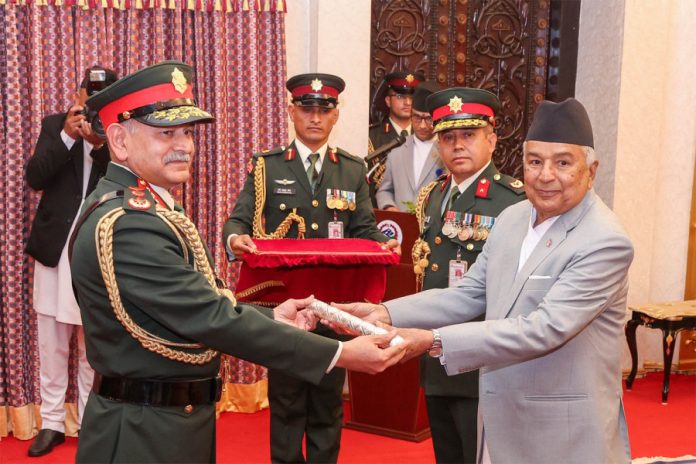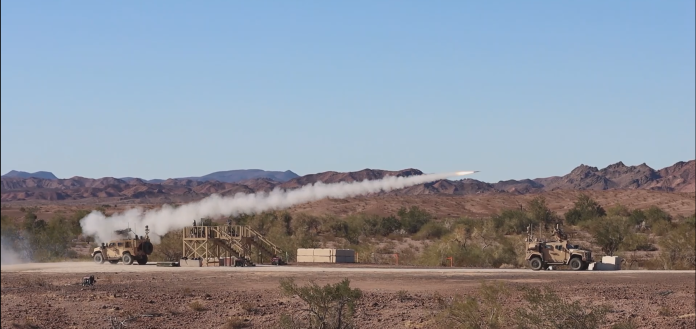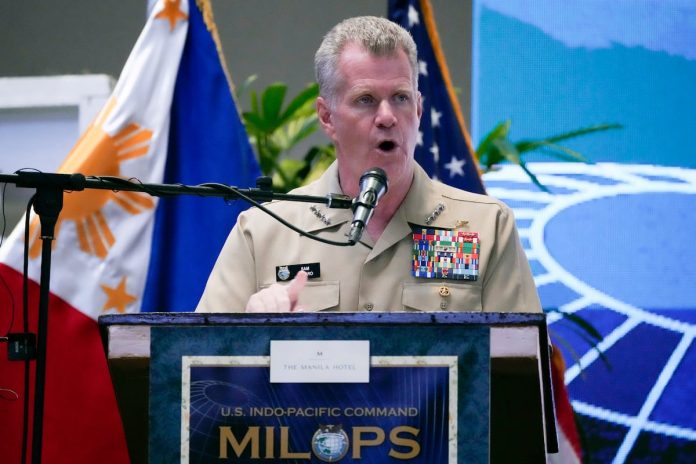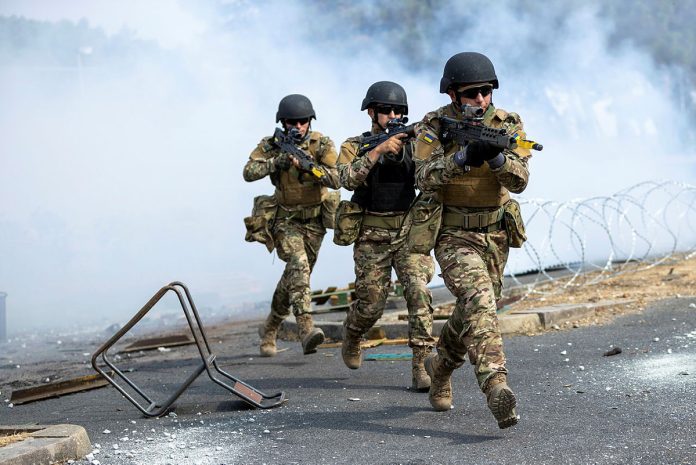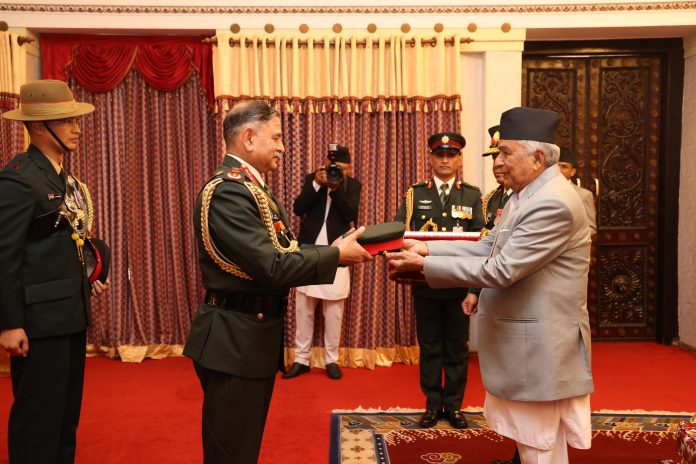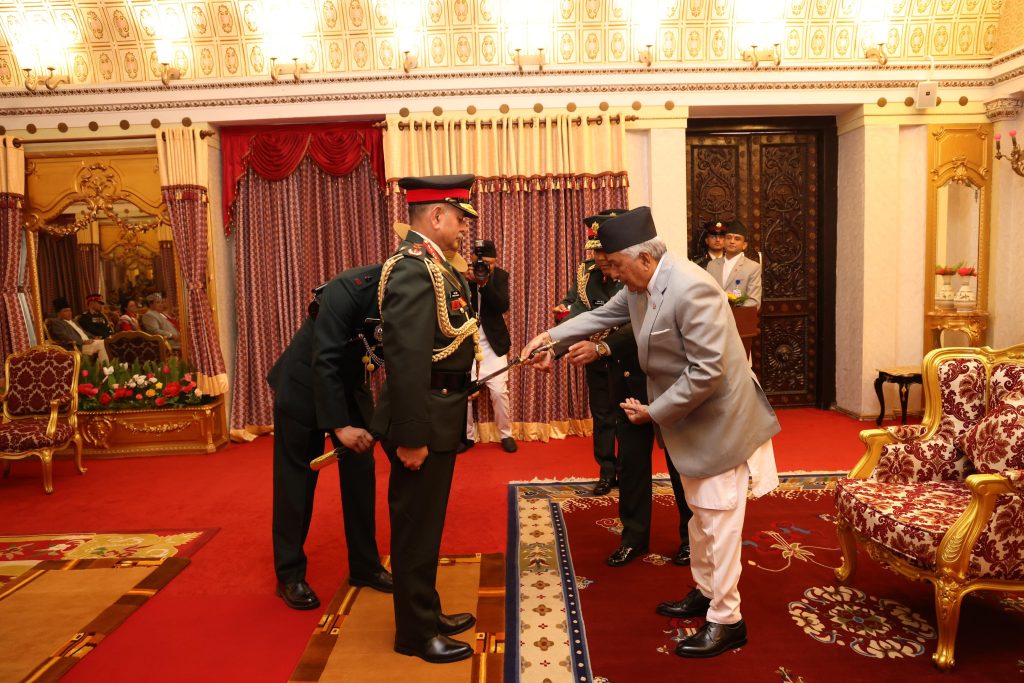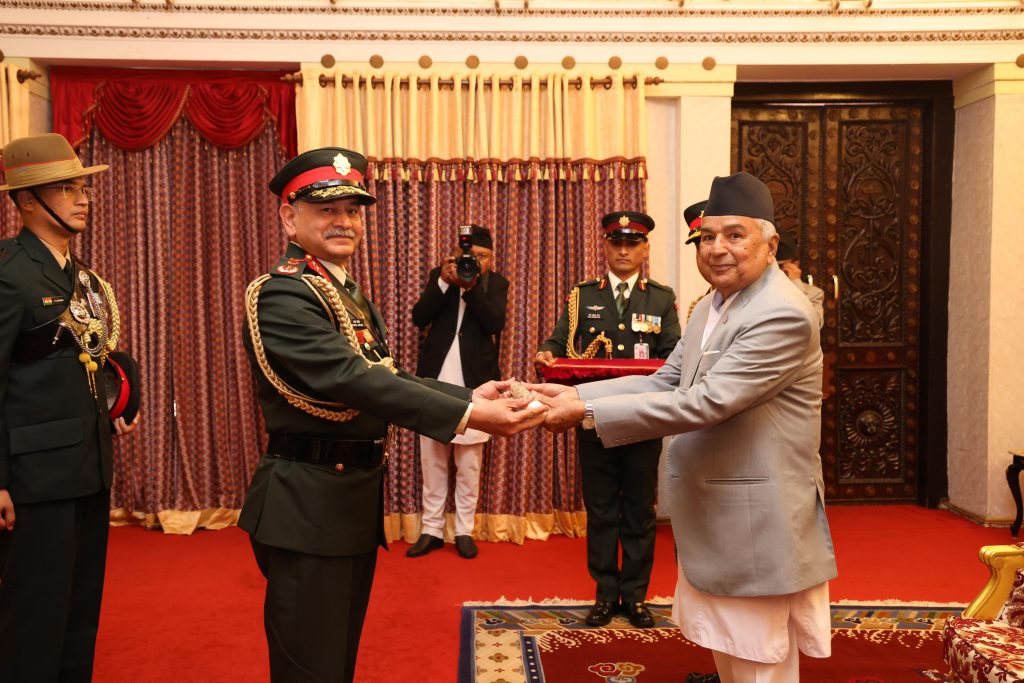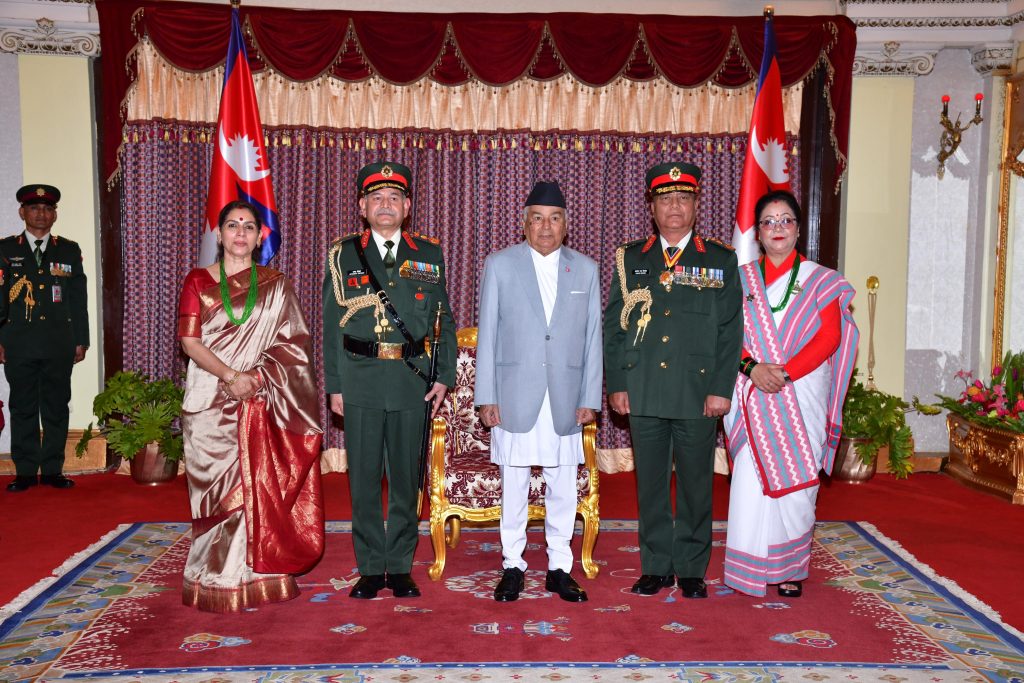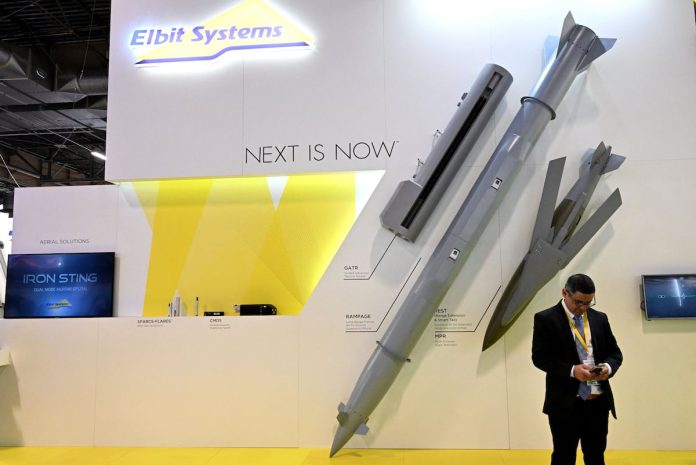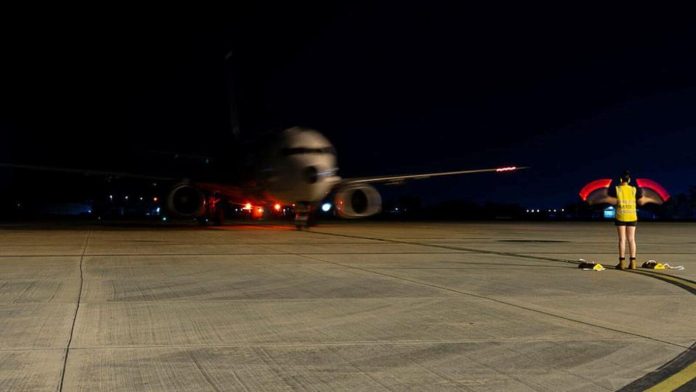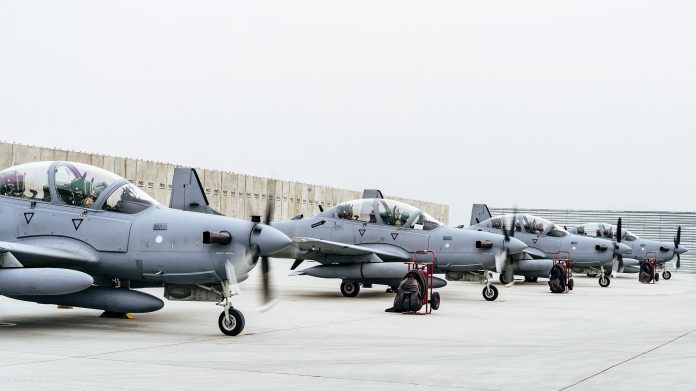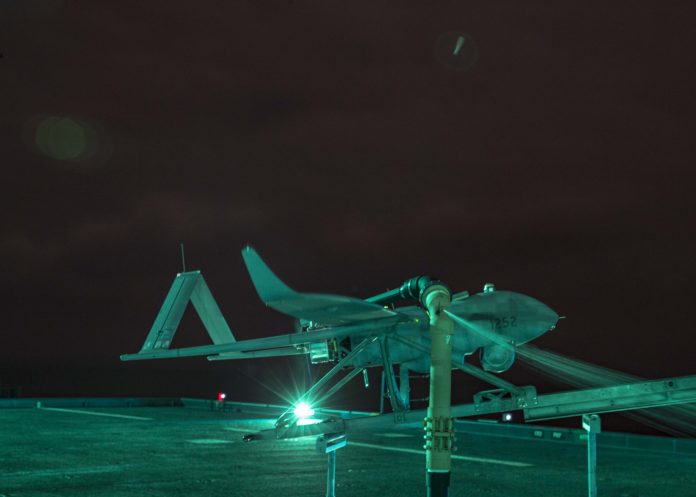In a significant display of military camaraderie, Nepal’s President Ramchandra Paudel bestowed the Honorary Rank of General of the Nepal Army upon Indian Army Chief General Upendra Dwivedi during a ceremonial event held at Rastrapati Bhawan, Sheetal Niwas, on Thursday afternoon. This gesture strengthens the longstanding tradition between Nepal and India of granting honorary titles to each other’s army chiefs, a practice rooted in mutual respect and collaboration that dates back to 1950.
General Dwivedi, leading a five-member delegation, arrived in Kathmandu on Wednesday for a five-day official visit following an invitation extended by his Nepalese counterpart, General Ashok Sigdel. Upon his arrival, General Dwivedi engaged in discussions with General Sigdel at the Nepal Army Headquarters, focusing on enhancing military cooperation between the two nations. Indian Embassy sources reported that the dialogue aimed at fostering stronger bilateral relations between the armed forces of Nepal and India.
As a symbol of enduring friendship, General Dwivedi also partook in a ceremonial gesture of planting a Rudraksha sapling on the premises of the Nepal Army Headquarters, further emphasizing the bond between the two armies. Earlier in his visit, he honored fallen soldiers by laying a wreath at the Martyr’s Memorial in the Army Pavilion, Tundikhel, and received a formal Guard of Honour upon his arrival at the Army Headquarters.
General Dwivedi’s itinerary includes a visit to the Army Staff College located in Shivapuri, on the outskirts of Kathmandu, as well as plans for a mountain flight, ensuring a multifaceted engagement during his stay. The exchange of visits between the army chiefs of Nepal and India has been a hallmark of their military relationship, reinforcing ties through mutual recognition and respect.
The relationship between the two nations is further highlighted by Nepal’s extensive border with five Indian states: Sikkim, West Bengal, Bihar, Uttar Pradesh, and Uttarakhand, which fosters a strategic partnership and continuous military dialogue. General Dwivedi’s visit is expected to solidify the collaborative efforts and strengthen the defense ties that bind the two countries. He is accompanied by his wife, Sunita Dwivedi, who serves as the chairperson of the Army Wives Welfare Association of the Indian Army, underscoring the personal commitments that accompany such official partnerships.

